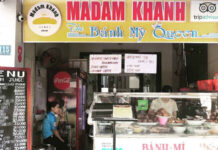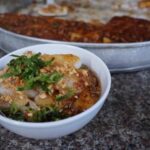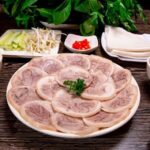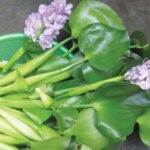Lang Son, a region renowned for its diverse street food offerings, is an intriguing destination for culinary enthusiasts. Among the myriad delights, ‘banh cao sang’, or the ‘multi-layered cake’, stands out as a popular snack among locals. Despite its seemingly simple ingredients, the intricate and meticulous preparation process yields a robust and distinctive flavor profile, making it a favorite choice for discerning palates.
The origins of ‘banh cao sang’ lie in the beautiful fusion of Vietnamese and Chinese culinary cultures. Historical records suggest that this delicacy was a favorite among the Chinese populace, and during their settlement and commercial activities in Lang Son, they introduced it to the region. Over time, the locals skillfully adapted the recipe to suit the preferences and tastes of the Vietnamese people.
Considered a humble dish, ‘banh cao sang’ is crafted from accessible ingredients such as rice, pork, and shallots. However, achieving perfection in this dish requires a discerning eye for quality rice—opt for fragrant, white rice that, when cooked, yields a delectably soft and sticky texture. The rice is soaked overnight, then ground into a fine paste the next day. It is then steamed over a water bath for approximately 40 minutes.
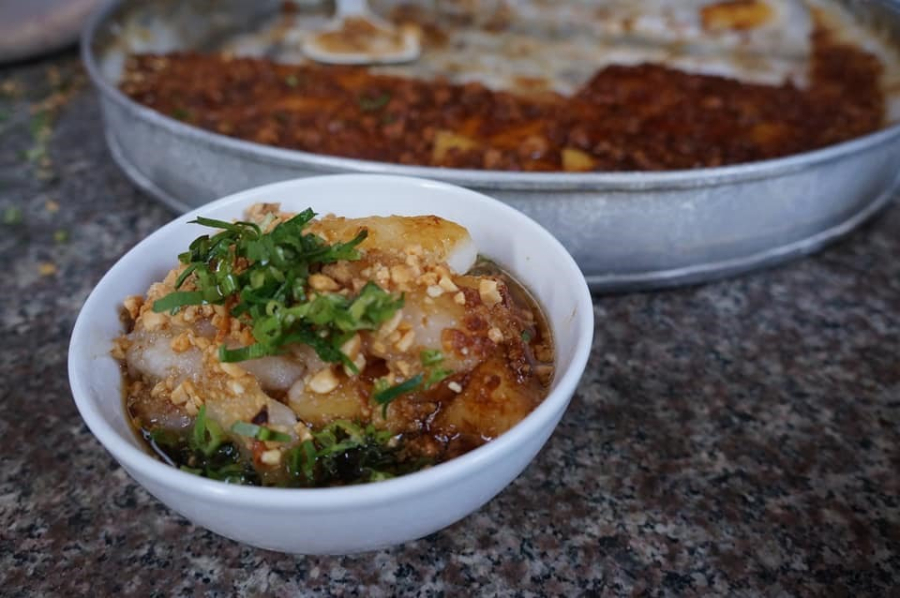
The affordability and simplicity of “banh cao sang” lie in its ingredients: rice, pork, and shallots.
Each layer of the cake is carefully crafted: after the first layer is cooked, the second layer is poured on top. Once the second layer is complete, the cake is fully cooked and set. Excess water is carefully drained to ensure a perfect consistency.
The filling of ‘banh cao sang’ is a simple yet elegant combination of minced pork and shallots. This mixture is sautéed to perfection and then spread thinly over the cake’s surface, adding moisture and enhancing the overall flavor profile. The distinctive nutty flavor of roasted and crushed peanuts further accentuates the unique taste of this delicacy.
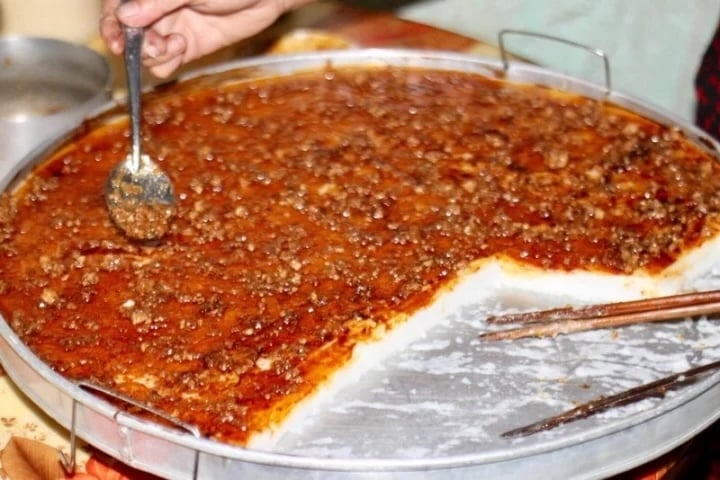
The filling, a harmonious blend of minced pork and shallots, is the essence of “banh cao sang.”
To elevate the experience, a dipping sauce is often served alongside the cake. This sauce is a simple concoction of vinegar, sugar, chili sauce, fish sauce, and herbs, mixed in perfect proportions. When indulging in this treat, it is customary to pour the sauce generously over the cake to enhance the flavors and prevent monotony. The locals of Lang Son often accompany their ‘banh cao sang’ with a bowl of pork bone broth, garnished with chopped spring onions and celery, adding to the allure of this culinary delight.
The unique serving style of ‘banh cao sang’ is designed to be savored in small portions, preventing monotony. Typically, plates served to tourists include two pieces of cake and half a bowl of dipping sauce. This street snack is ideal for chilly winter days, as it provides a warm and satisfying experience, allowing one to fully appreciate the flavors and warmth of the cake.
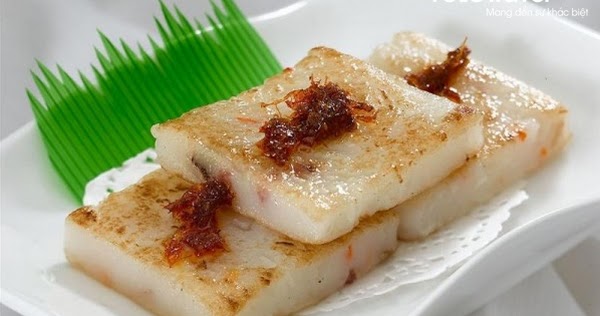
‘Banh cao sang’ is best enjoyed in small portions to appreciate its flavors fully.
In the folk sayings of Lang Son, there’s a playful expression: “If you dislike someone, make them ‘banh cao sang’. But if you truly detest them, invite them to eat it with you.” At first glance, this phrase might suggest that ‘banh cao sang’ is an unappetizing dish, reserved for those who don’t get along. However, local folklore is often laced with humor and wit, and the true meaning behind this saying is quite the opposite. Inviting someone to share ‘banh cao sang’ is a gesture of warmth and camaraderie, a symbol of the strong bonds that unite the people of this region.
Despite being one of the many street snacks that characterize the cuisine of Lang Son, ‘banh cao sang’ holds a special place in the hearts of the locals. This unique “multi-layered cake” not only enriches the culinary landscape of the region but also offers a memorable culinary experience that every visitor should indulge in.
Wild Weeds: From Ancient Pest to Modern Delicacy – A Tasty, Crisp, and Refreshing Salad Treat
Water hyacinth, or Eichhornia crassipes, is a free-floating aquatic plant with an invasive nature, often found in quiet waters such as ponds, lakes, and canals. With its vibrant purple blooms and lush green foliage, it paints a pretty picture, but beneath the surface lies a different story. This plant, native to the Amazon basin, has earned itself the nickname “terror of tropical waterways” due to its rapid growth and ability to form dense mats that choke out native flora and fauna. Despite its beauty, the water hyacinth is a formidable foe, requiring constant management to prevent it from taking over and causing ecological havoc.






















